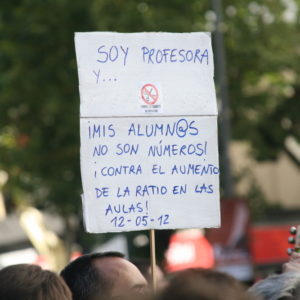4.14: El verbo ser
- Page ID
- 50089
Objetivos
Identify the correct conjugations of the verb ser (to be)
El verbo ser

The verb ser means to be. Just as the be verb in English (I am, you are, he/she is…), the verb ser is very irregular in all tenses. Therefore, it is important that you memorize it! You need to change the verb depending on the subject like the example below, this is an example of conjugating.
Examples of conjugating with singular subjects:
Examples of conjugating with plural subjects:
 nosotros somos: We are
nosotros somos: We are vosotros sois*: You are
vosotros sois*: You are ellos son /
ellos son /  ellas son /
ellas son /  ustedes son: They are / They (feminine) are / You all are
ustedes son: They are / They (feminine) are / You all are
| ser (to be) | |
| singular | plural |
* This form is only used in Spain. The Latin American equivalent is ustedes son

Using ser
Up to this point, you have seen ser used in the following ways:
- to identify someone/something
- to ask or say where someone is from
- To ask and say your profession
You may also have seen ser used to describe something or someone. We’ll cover this in the next unit!
INtéNTALO (Try It)
- Some content on pronouns adapted from Spanish - Lesson 3. Provided by: Wikibooks. Located at: https://en.wikibooks.org/wiki/Spanish/Lessons/Introducci%C3%B3n_a_la_gram%C3%A1tica. License: CC BY-SA: Attribution-ShareAlike
- Tu eres lo que ves. Located at: https://www.flickr.com/photos/daquellamanera/5002555683. License: CC BY: Attribution
- Authored by: SUNY Oneonta with Lumen Learning. License: CC BY: Attribution

